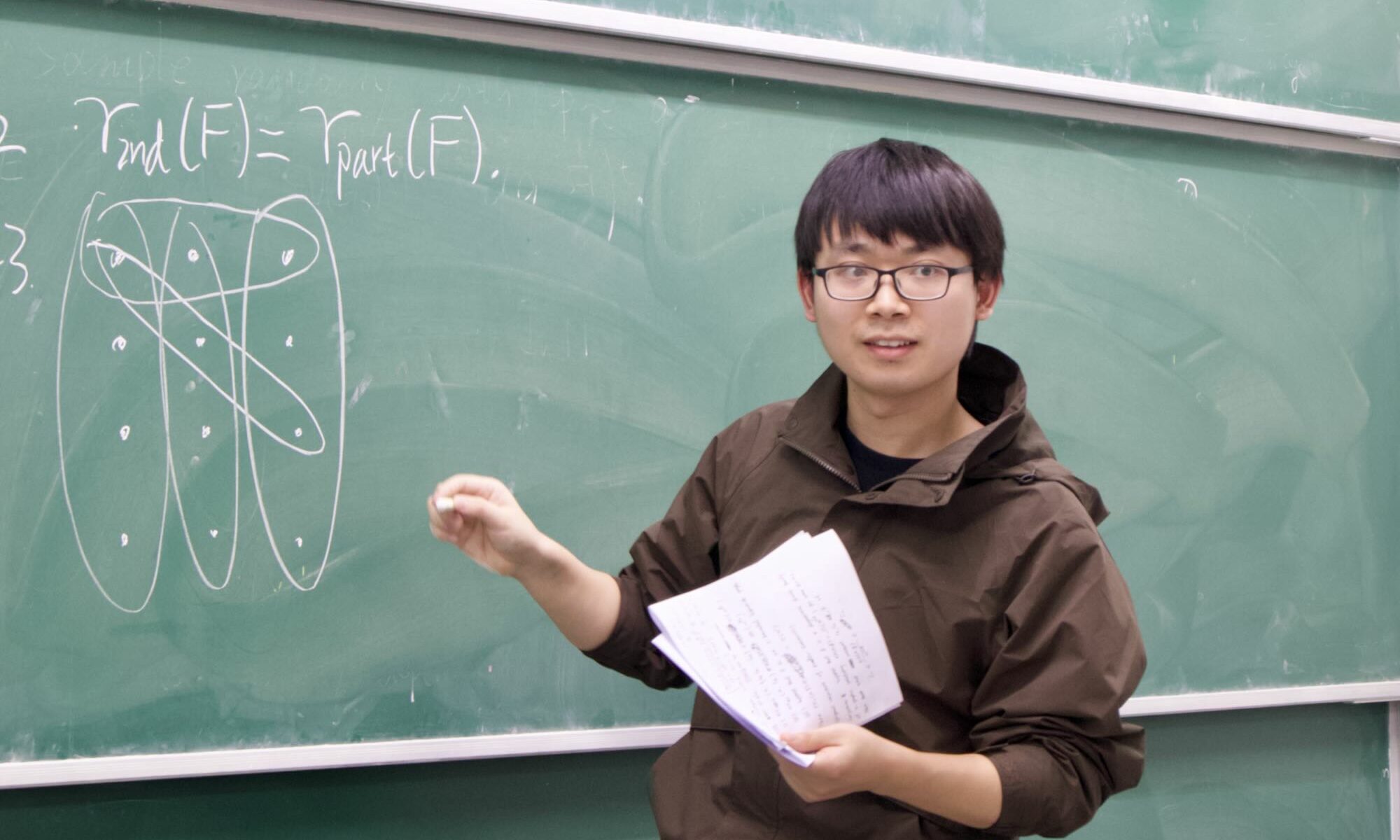On December 13, 2024, Jun Gao (高峻) from the IBS Extremal Combinatorics and Probability Group gave a talk at the Discrete Math Seminar on the maximum sum of the p-th power of degrees in a hypergraph without fixed subhypergraphs. The title of his talk is “Phase transition of degenerate Turán problems in p-norms“.
Jun Gao (高峻), Phase transition of degenerate Turán problems in p-norms
For a positive real number $p$, the $p$-norm $\|G\|_p$ of a graph $G$ is the sum of the $p$-th powers of all vertex degrees. We study the maximum $p$-norm $\mathrm{ex}_{p}(n,F)$ of $F$-free graphs on $n$ vertices, focusing on the case where $F$ is a bipartite graph. It is natural to conjecture that for every bipartite graph $F$, there exists a threshold $p_F$ such that for $p< p_{F}$, the order of $\mathrm{ex}_{p}(n,F)$ is governed by pseudorandom constructions, while for $p > p_{F}$, it is governed by star-like constructions. We determine the exact value of $p_{F}$, under a mild assumption on the growth rate of $\mathrm{ex}(n,F)$. Our results extend to $r$-uniform hypergraphs as well.
We also prove a general upper bound that is tight up to a $\log n$ factor for $\mathrm{ex}_{p}(n,F)$ when $p = p_{F}$.
We conjecture that this $\log n$ factor is unnecessary and prove this conjecture for several classes of well-studied bipartite graphs, including one-side degree-bounded graphs and families of short even cycles.
This is a joint work with Xizhi Liu, Jie Ma and Oleg Pikhurko.
Jun Gao gave a talk about the tight upper bound on the number of (k-1)-cliques in a k-critical graph at the Discrete Math Seminar
On August 30, 2022, Jun Gao (高峻) from the IBS Extremal Combinatorics and Probability Group gave a talk at the Discrete Math Seminar about the tight upper bound on the number of (k-1)-cliques in a k-critical graph, solving the conjecture of Abbott and Zhou in 1992. The title of his talk was “Number of (k-1)-cliques in k-critical graph“.
Jun Gao, Number of (k-1)-cliques in k-critical graph
We prove that for $n>k\geq 3$, if $G$ is an $n$-vertex graph with chromatic number $k$ but any its proper subgraph has smaller chromatic number, then $G$ contains at most $n-k+3$ copies of cliques of size $k-1$. This answers a problem of Abbott and Zhou and provides a tight bound on a conjecture of Gallai.
This is joint work with Jie Ma.
Welcome Jun Gao, a new member of the IBS Extremal Combinatorics and Probability Group
The IBS Discrete Mathematics Group welcomes Dr. Jun Gao (高峻), a new (and second) research fellow at the IBS Extremal Combinatorics and Probability Group from August 1, 2022. He received his Ph.D. from the University of Science and Technology of China (USTC) under the supervision of Prof. Jie Ma.




